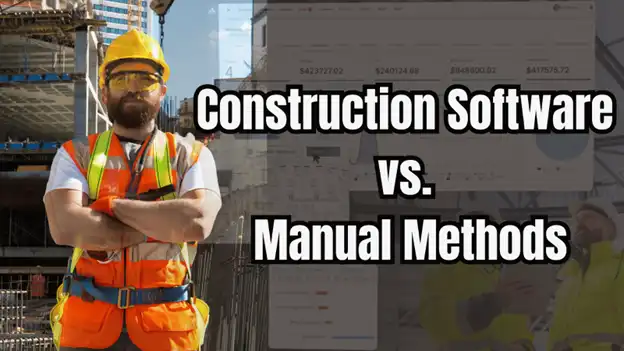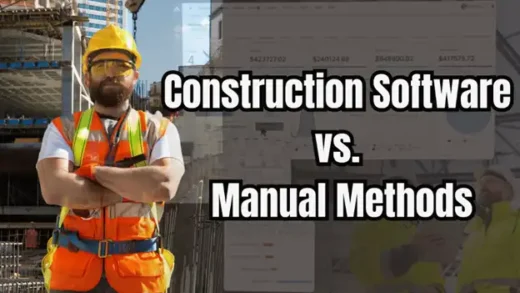Construction management software v traditional methods, which wins, Property computer design guide
Construction Management Software vs. Traditional Methods: Which Wins?
19 March 2025
Introduction
Managing construction projects is no easy task. From budget overruns to communication breakdowns, the industry faces constant challenges. For years, traditional construction management methods—spreadsheets, paper trails, and manual tracking—were the norm. But now, Construction Management Software is revolutionizing the way projects are planned, executed, and delivered.
The big question is: Which approach is better—traditional methods or modern software solutions? In this guide, we’ll break it down for you, comparing both methods and helping you decide which one truly wins in today’s fast-paced construction industry.
The Traditional Approach: Strengths & Weaknesses
For decades, construction projects were managed using manual processes—paper documentation, phone calls, and spreadsheets. While this method worked in the past, it has major drawbacks in today’s competitive landscape.
Strengths of Traditional Methods:
- Simplicity – No need for training or software setup. Many construction professionals are comfortable with the old system because it’s straightforward and doesn’t require additional learning.
- Familiarity – Since the industry has been using traditional methods for years, older generations of construction managers may prefer sticking to what they know.
- Hands-on control – Decision-making is entirely manual, giving the project manager direct oversight of every step.
Weaknesses of Traditional Methods:
- Time-consuming – Tracking budgets, invoices, and schedules manually takes too much effort and slows down project completion times.
- Error-prone – Data entry mistakes lead to costly miscalculations, which can affect Construction Procurement and cost management.
- Lack of collaboration – With multiple teams working separately, communication gaps can lead to major misunderstandings and project delays.
- Poor cost control – Since cost tracking isn’t automated, projects often go over budget before the issue is identified.
Now, let’s see how Construction Management Software changes the game.
How Construction Management Software Changes the Game
Today’s leading construction companies are switching to Construction Management Software because it automates critical tasks, reduces human error, and boosts efficiency. But what exactly does it do?
Centralized Project Management
One of the biggest benefits of Construction Management Software is that it keeps everything in one place. No more lost paperwork, misplaced contracts, or confusing spreadsheets. Teams can track every stage of the project in real-time, ensuring better organization and reducing miscommunication.
A single dashboard provides project timelines, financial reports, and task assignments at a glance. This eliminates the need for manual record-keeping and allows project managers to focus on delivering quality work.
Automated Construction Procurement
Construction Procurement is a critical aspect of project management, yet it often faces delays due to slow paperwork processing. Software solutions simplify procurement by automating the bidding process, tracking vendor deliveries, and managing purchase orders efficiently.
With automation, procurement time can be reduced significantly, ensuring materials arrive on time, preventing idle periods, and avoiding costly project delays.
Real-Time Construction Cost Controlling
Budgeting is one of the most challenging aspects of construction. Without accurate cost tracking, expenses can spiral out of control. Following construction project budgeting best practices can help project managers maintain better financial oversight, ensuring that every dollar is accounted for.
Construction Cost Controlling features in modern software allow real-time expense monitoring, reducing the risk of overspending. Software tools provide predictive cost analysis, alerting managers to potential budget overruns before they happen. This proactive approach prevents financial surprises and improves profitability.
Cloud-Based Collaboration
Communication gaps can make or break a construction project. When different teams—contractors, engineers, and suppliers—fail to stay on the same page, project deadlines are often missed. Cloud-based construction software ensures that everyone has access to the latest updates, reducing misunderstandings and improving coordination.
For example, when an architect makes a design change, the update is immediately visible to the contractor and procurement team, avoiding costly errors and rework.
Faster Decision-Making
With real-time project tracking, managers can quickly make data-driven decisions. Instead of waiting days or weeks to review progress reports, they can instantly access key metrics and take corrective actions as needed.
This agility allows construction firms to stay ahead of challenges, making operations more efficient and reducing project delays.
Side-by-Side Comparison: Traditional vs. Software-Based Approach
| Feature | Traditional Methods | Construction Management Software |
| Project Tracking | Manual, time-consuming | Automated, real-time updates |
| Procurement | Paper-based, slow | Digital, streamlined processes |
| Cost Control | Difficult to track | Predictive budgeting tools |
| Collaboration | Limited, siloed teams | Cloud-based, instant sharing |
| Risk Management | Reactive problem-solving | Proactive issue detection |
It’s clear—Construction Management Software outperforms traditional methods in nearly every category.
The ROI of Switching to Construction Management Software
Companies that adopt Construction Management Software report significant improvements:
- 30% faster project completion times
- Up to 20% cost savings due to improved tracking and budgeting
- Fewer errors and increased compliance with industry regulations
Real-World Example:
A general contractor switched from spreadsheets to a software-based system and reduced project delays by 40%, while saving thousands on mismanaged procurement costs. This is the power of technology.
By integrating software into their workflows, construction firms can enhance productivity, reduce costs, and improve overall project efficiency.
Conclusion: Which One Wins?
So, which approach is better? The answer is clear—Construction Management Software wins by a landslide. While traditional methods may have worked in the past, modern projects demand speed, accuracy, and efficiency that only software can provide.
If you’re still relying on outdated methods, it’s time to rethink your approach. The construction industry is evolving, and those who adapt to smarter management tools will stay ahead of the competition.
Imagine having real-time insights, seamless collaboration, and complete control over your projects—without the hassle of manual tracking. Start exploring Construction Management Software today and see the difference it makes in your next project.
Comments on this guide to Construction Management Software vs. Traditional Methods: Which Wins? article are welcome.
Edinburgh Architecture
Contemporary Scottish Capital Property Designs – recent architectural selection below:
Powderhall Stables Building News
What is BIM in construction guide
Comments / photos for the Construction Management Software vs. Traditional Methods: Which Wins? page welcome.





